Today we are witnessing a flying development of the automotive technology with more and more electronic devices and programs watching the road and helping drivers react in all sorts of situations. The new technologies are substituting outdated controls, so now, instead of a whole lot of gears, sticks and buttons, we work with a touch screen. This in-vehicle tablet turns a car into a part of the entire ecosystem along with smartphones, laptop, and smart watches. No wonder UI has become a hot spot in the automotive: climate control, personal configuration, media-player settings - every day, every hour put that car into power.
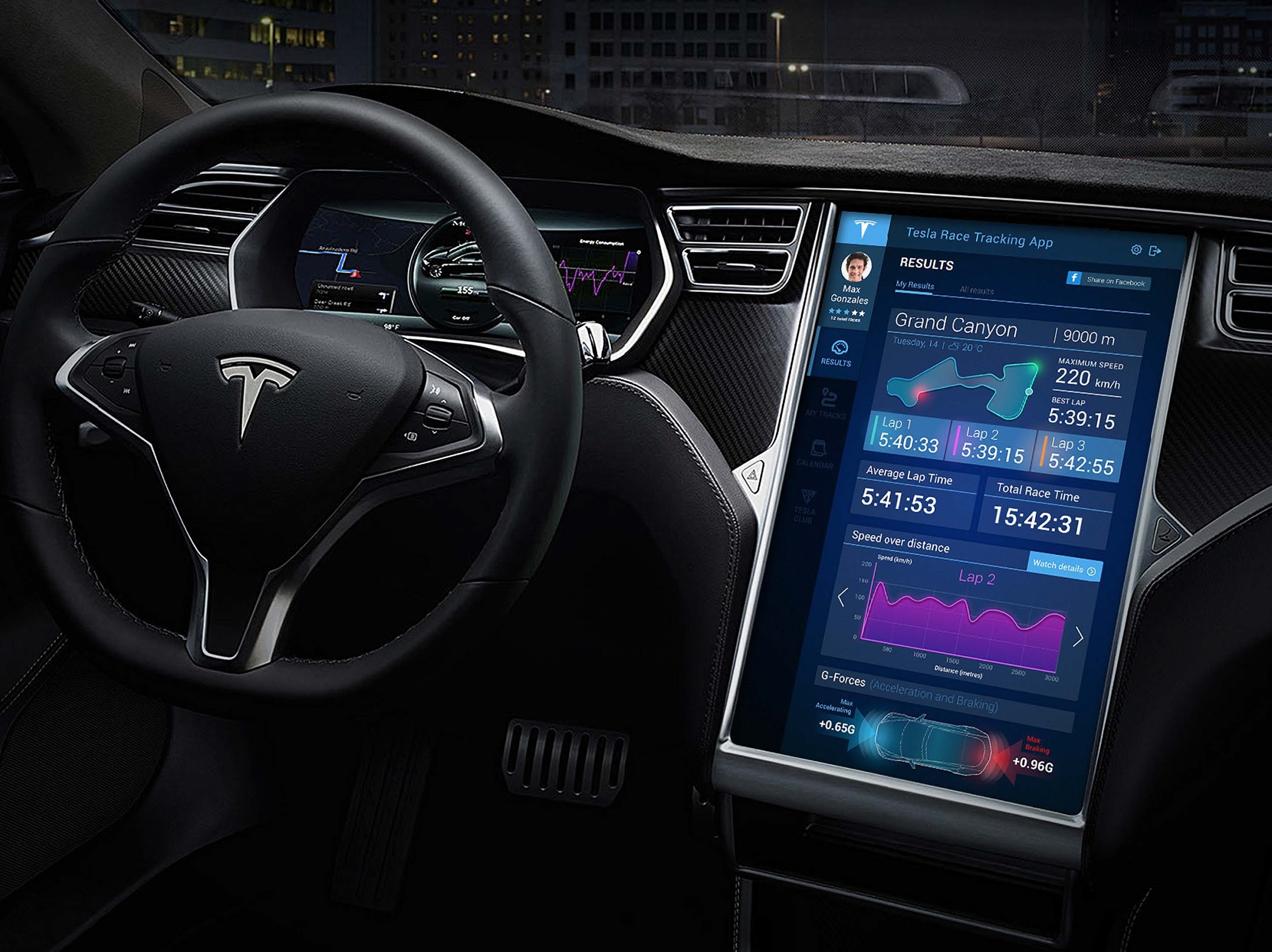
What spurred our interest is that so little attention is payed to the fact that Tesla goes from 0 to 100 km/h under 3 seconds. Only. Three. Seconds. It’s a real supercar! It’s unlikely that Tesla drivers have no interest in trying the vehicle out. What if we direct all the data from all the sensors and processors to help a driver: to analyze trajectory and speed, to measure braking and acceleration within every round accomplished, to detect weak spots and provide recommendations for faster and more effective lap times.
We decided to make a more in-depth research of this issue. First things first: comparison of already existing solutions, namely Performancebox, Volkswagen RaceApp, Harman, RacingMeter and other market leaders. They all provide information about car performance: the dynamics of acceleration, top speed, braking distance, arrival time, and the best lap. No doubts, these factors are important, but do they provide enough for a driver? Many restrictions may be explained by the fact that these are third-party programs with no access to many sensors of a car. However, they simply state facts while the racers (i.e., users) need much more information to perform better, in particular rotation speed and trajectory, ability to compare the result and produce the forecast for every lap during the race. The almighty Internet came in handy: we set up the related topical discussion to find out what users are lacking.
Having collected plenty of information, the design solution clocked in by itself: an application enlightening a driver about the real capacity of their car providing the following:
- Maximum speed
- Let a driver turn like a pro without drifting
- Exchanging lap experience with other drivers
- Evaluate results after each lap, compare it with the previous results, and improve the next round, etc.
Since Tesla is an everyday car, and its owners attend a racing track only once in a while, we decided to make an interface which would resemble video games (e-ron-don-don :), easy to understand and use.
During the Race
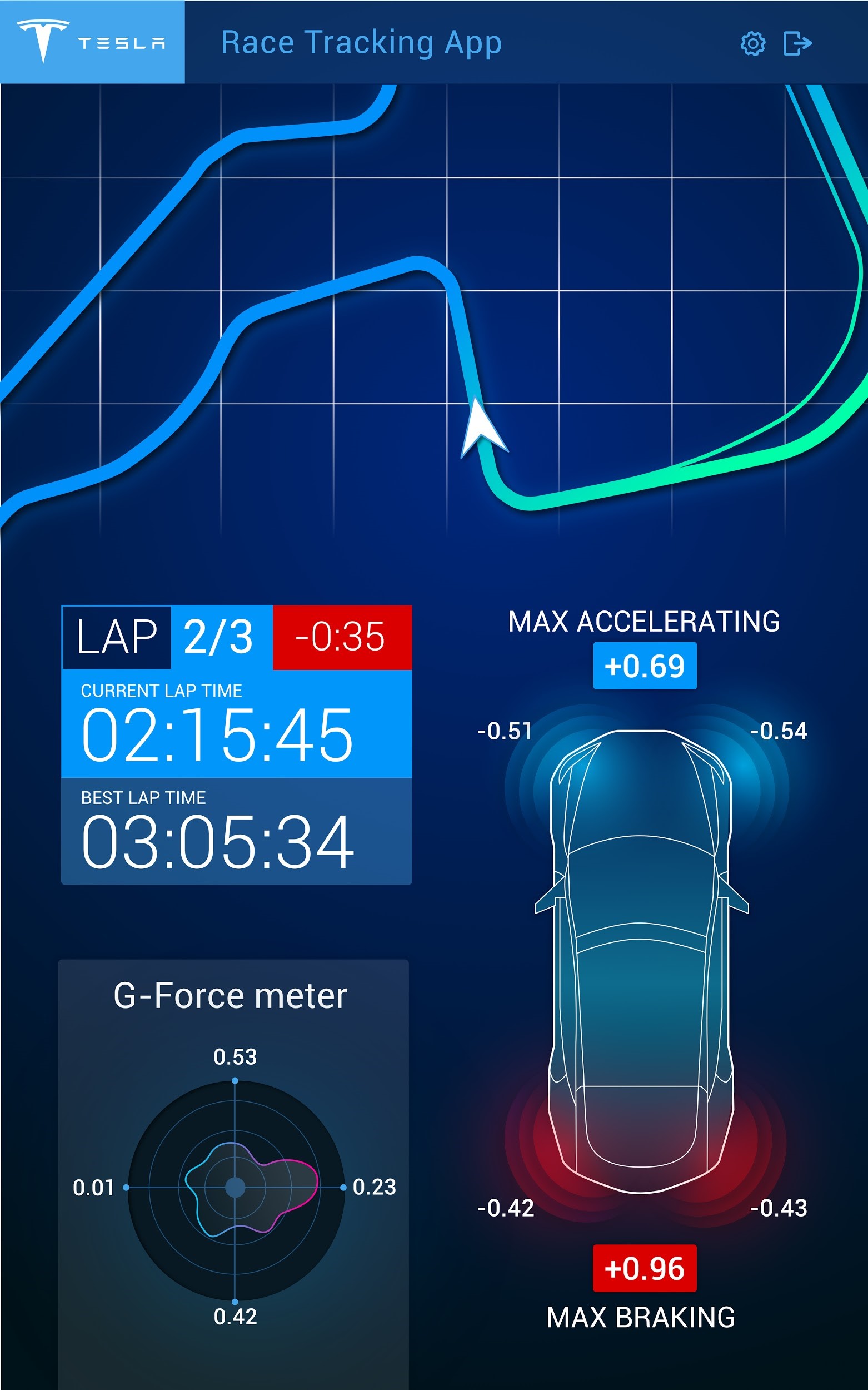
This part reflects dynamic information of every lap: forecasted time, acceleration, braking, and g-forces. These bits let a driver immediately react and correct their driving manner. Having the estimated lap time, a driver knows if he falls behind or goes ahead. Being aware of reloading, it’s possible to select speed and trajectory needed to avoid drifting. Dynamics map would make it easier to select trajectory, displaying the next turn in advance. Trajectory recommendations are provided with the voice command not to overload a driver. Even if a particular track is not in the database yet, it may be projected within the course of the test round.
After the Race
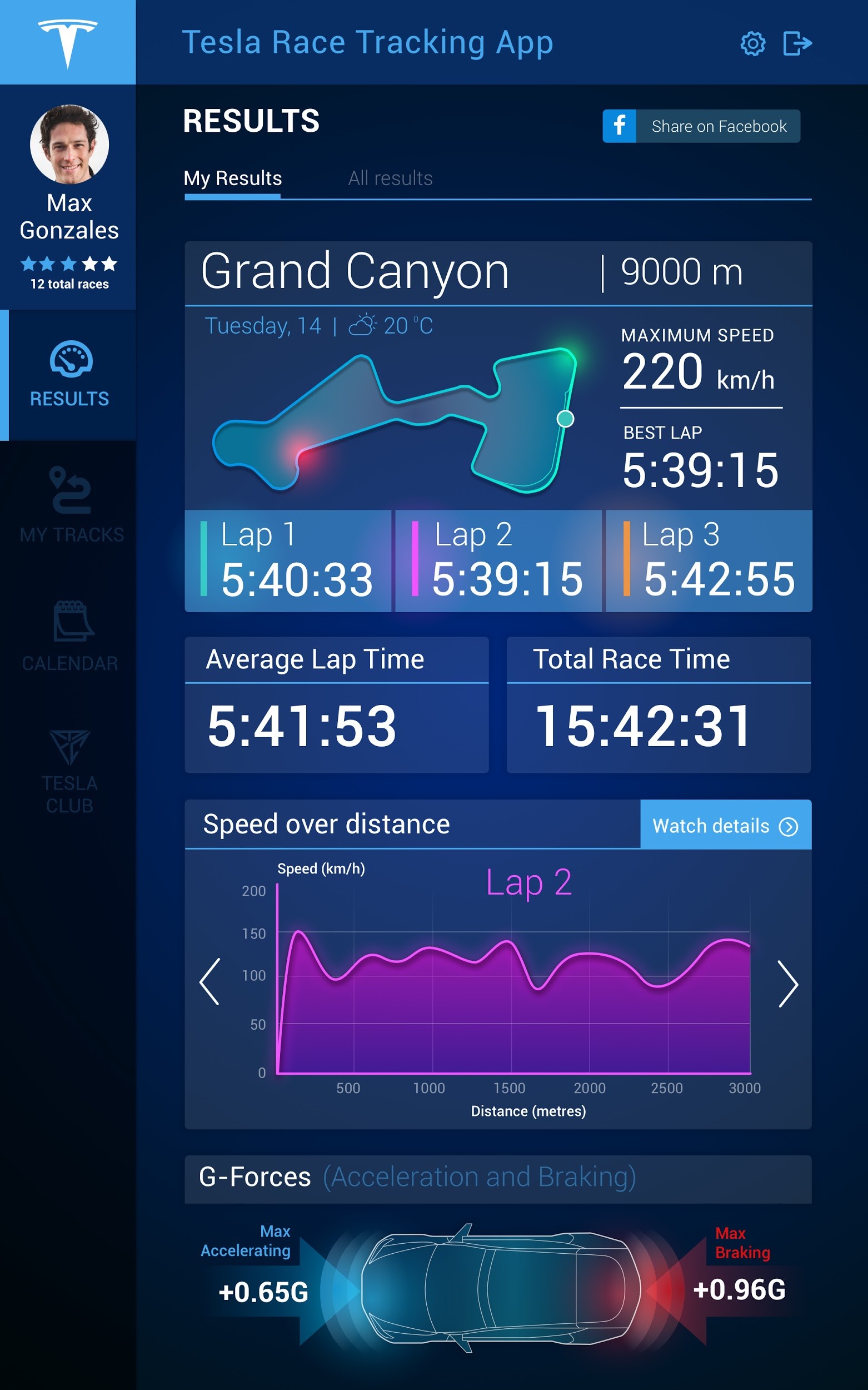
All the data collected during the race is summarized into a single report to create a general image of a user’s driving manner: lap time, speed dynamics, maximum acceleration and braking. What’s more, the map will display the strongest and weakest moments of the race, so the driver may analyze their ups and downs to improve the result.
Results Analysis
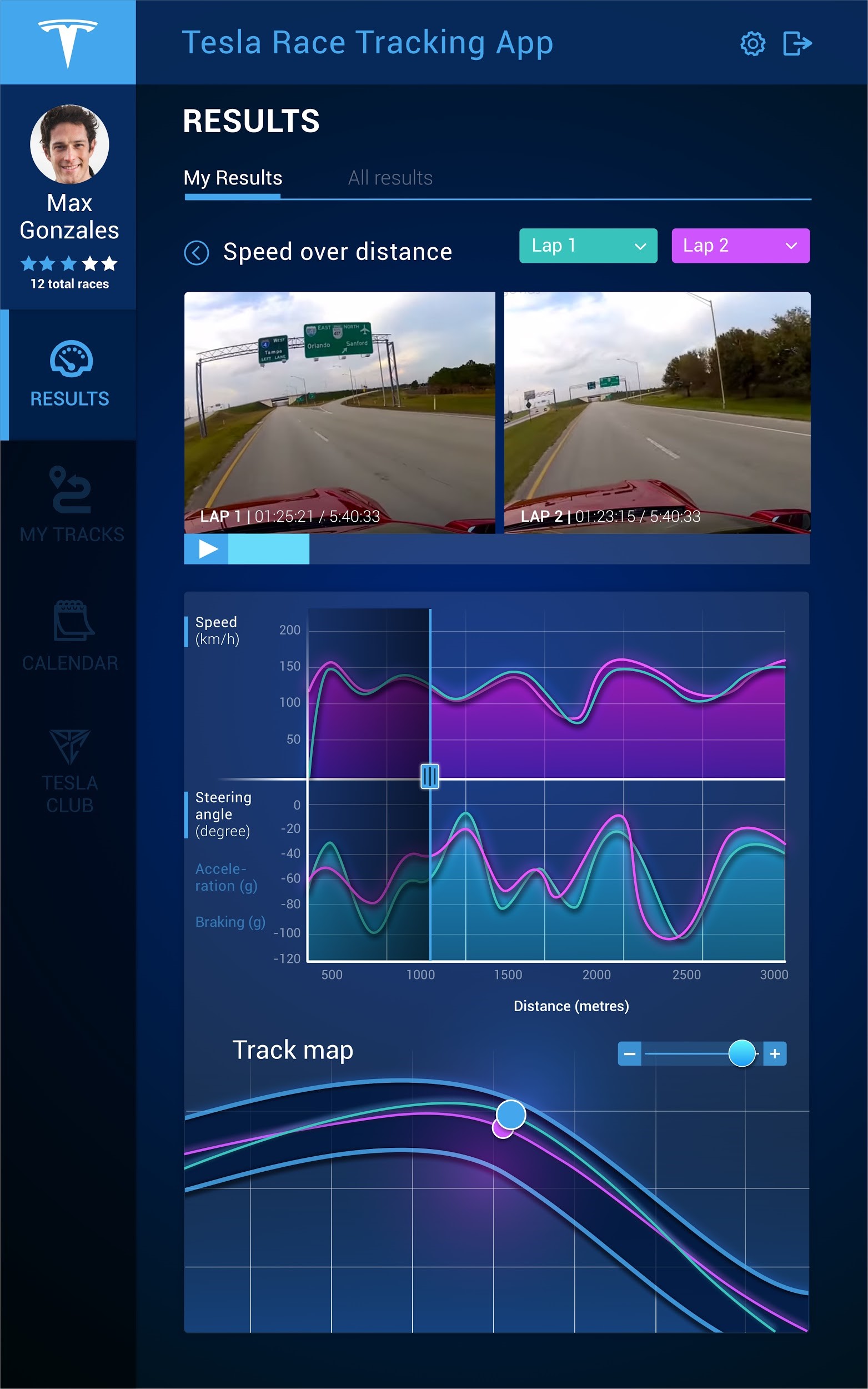
That’s the most gripping part of the app with comparison being its key feature. A driver may get reviews of his race from different angles and then compare them with the results of nay lap of his choice. By dragging cursor through the graph, the data changes all over the screen displaying vehicle’s state at any particular point. This way it’s more convenient to get the grasp of the lap trajectory; also, video recording of the lap adds up to analyzing the context (environment, map location, etc.).
Driving History
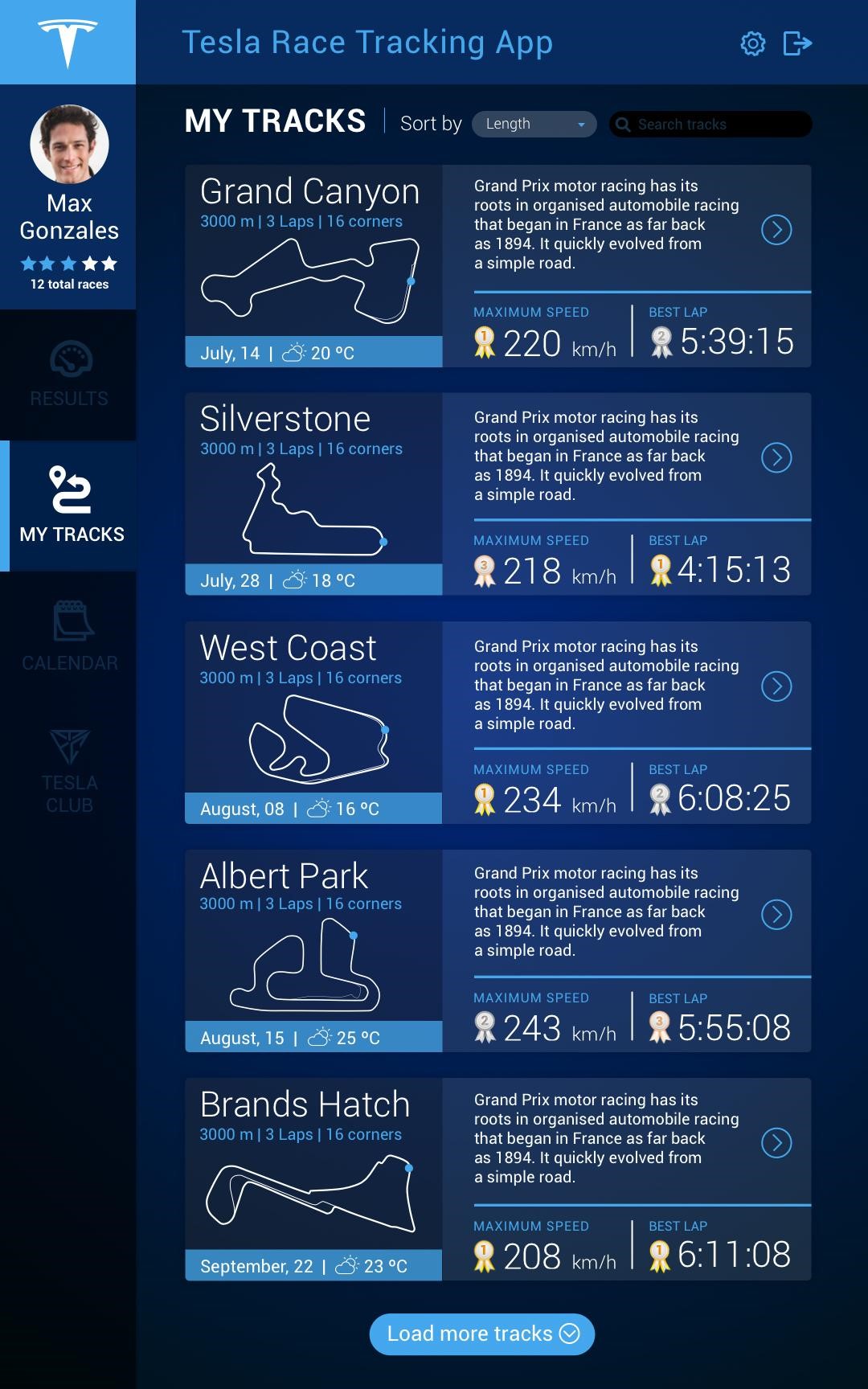
Since all the racing data is being saved, a driver may track their improvement within the year or compare their own results with the achievements of other racers. Being able to analyze the driving history makes it possible to improve driving skills much easier than it used to be.
This articles serves as an example of how user research may lead to really innovative results and disclose hidden slots. Nobody knows user needs better than users themselves, so we just need to learn to listen to them, not only hear. This concept is doesn’t claim to be the best racing solution ever; we see it rather as an exercise, a sketch of ideas we are personally interested in. If you share our vision and stick by the presented ideas, take a look at our concept at Behance and let’s keep it spinning together.

